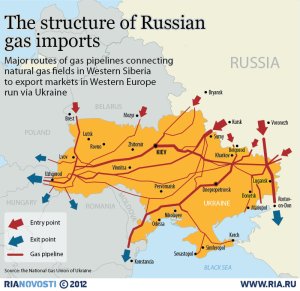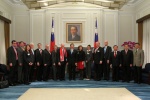Home » 2014
Yearly Archives: 2014
Ukrainia Mania
Recent news has much of the West looking toward Ukraine: One week ago riots broke out in Ukraine, the pinnacle of a multi year long struggle between pro EU and Pro Russian citizens in the former Soviet Union. Following the cease of the riots, Ukraine’s pro-Russian President, Viktor Yanukovych, was ousted. Since then, Ukraine’s parliament has put in place an interim government and scheduled elections for May, while ousted president Yanukovych fled to Russia. Following the implementation of a new government, Russian troops have entered Crimea, the southern peninsula of Ukraine with a decidedly pro Russian population (many of whom are ethnically Russian). The West has been startled by what many have called Russia’s clear violation of Ukraine’s sovereignty, and Ukrainian citizens have broken out in protest in favor of and against Russian forces around the country. Much like the 2008 South Ossetia War, Ukraine has the potential to quickly become a flashpoint of conflict.
Unlike most of the U.S. media, many analysts have been focused on the potential for conflict in the Ukraine for quite some time. The point of focus, however, has been from an energy perspective. Edward Chow, a Senior Fellow at the Center for Strategic & International Studies, and mentor to the author, has long focused some of his very limited time on Ukraine. Mr. Chow most recently wrote about Ukraine in December 2013, in the online CSIS Commentary, “Ukraine and Russian Gas–The Neverending Crisis”. Mr. Chow argues that Ukraine is at risk for becoming an energy appendage of Russia, with limited leverage over it’s more powerful neighbor and increasingly high debt. From the outside, it is easy for a lay person to see that this not only puts Ukraine in a vulnerable position economically, but strategically–the majority of Russia’s gas exports to Europe travel through Ukraine, making Russia’s need for Ukraine an important factor in its strong arming over the country.
Yes, other issues are creating a greater conflict between Russia and Ukraine (cultural and linguistic similarities, shared history, and EU vs Russian leaning foreign policies); however, the economic leverage Russia holds over Ukraine resulting from its poor energy policy has long been positioning the two countries for large scale conflict. As the crisis in Crimea escalates, Russia has every advantage, and has already started to send warning signals it may hold Russian Gas hostage as a result. Examining the conflict between Russia and Ukraine from an energy lens provides intriguing insights into the events currently unfolding, but also brings up an interesting question: Given the nature and history of disputes over energy resources, why are we unable to predict a conflict such as this? Are we looking in all the wrong places when making political predictions and charting future points of contention? Depending on the conflict, and the area of the world in question, perhaps tight energy markets and limited resources (or alternatives) do in fact precede conflict. Maybe analysts would be smart to take note of warning signs such as those in Ukraine.
Addendum:
New Russian Map: Posted to twitter via journalist Dave Keating on March 6, 2014, the following Map was used as an illustration of what would happen if Crimea’s parliament votes in favor of joining Russia on March 16:
Pipeline Trade: Pipelines from Russia & Belarus, traveling through Ukraine, carrying Russian gas to EU

A favorite map of Western news sources, via http://www.ria.ru
The Sinophiles’ White Whale: PRC-ROC Relations
For the first time in 65 years Taiwan and China have renewed talks–not since the split between the two “parties” in 1949 have there been normalized relations between the two Chinas.
Taiwan’s Mainland Affairs Council (MAC) and China’s Taiwan Affairs Office met in Nanjing, China on Tuesday, February 11, 2014–at the same time I was visiting Taiwan for my first time in 25 years. As luck would have it my trip was business related, hosted by the Taipei Economic and Cultural Representative Office (TECRO) with an official delegation of former government representatives and business leaders from the U.S., allowing me insight into off-the-record conversations on a variety of issues that are of relevance to Taiwan’s other important relationship, the U.S.
While the meetings were as amazing as the delegation members themselves, there were a few striking takeaways for this amateur sinophile. They are as follows:
1.) Taiwan…actually matters. I mean this in the best possible way–coming from an energy and trade background, Taiwan clearly matters to the mainland, and vice-versa. But I have always been under the impression that the status quo of cross-strait relations will forever remain the status quo–neither side will budge and the debate is a moot point.
So what is the point in even pretending change is on the horizon? One day they will be signing a trade agreement, the next day they will be pointing missiles at each other. The relationship will forever be sticky, and messy, and undefinable.
Well, as it turns out, the status quo is still the status quo, but what many in Taiwan see as actual progress was happening right under our nose at the cross-strait talks in Nanjing. Sure, these talks didn’t include either player’s president (they couldn’t–Taiwan is not a recognized country, so Xi Jinping, President of Mainland China, could never meet with Ma Ying-jeou, President of Taiwan. Further, because Taiwan is so adamant about its status as an independent, democratic China, Ma Ying-jeou could never stoop to meeting with anyone less than the President of China. Talk about complicated), but they do represent warming relations between two nemesis.
2.) Security is Taiwan’s top priority. This may not come as a surprise to most cross-strait experts. However, to other policy analysts this is surprising when compared to the U.S. government’s priorities–defense matters (our government spending shows us that every year come appropriations time), but so do a lot of other issues that are constantly (hotly) debated among our leaders. Cross-strait relations, however, define the majority of Taiwanese politics–from the current President’s approval rating, to the opposition party’s platform for the coming elections, to the new interest from Taiwan in joining the Trans-Pacific Trade Partnership, Taiwan is obsessed with its neighbor. Rightfully so, of course (similar to other cross-border tensions in Asia that will remain unnamed), but seeing first hand via the Taiwanese Navy, Air Force, and multiple unnamed Ministries the way in which all conversations about Taiwan’s interests come back to China really hammers home the point that cross-strait relations are, literally, everything.
3.) Mainland China is in a really, really good position.
Today China has a monopoly on trade, and Taiwan is a significant part of that monopoly (China represents 21% of Taiwan’s total trade; almost 30% if you include Hong Kong). Take, for example, this great graphic posted by Ian Bremmer on February 27, 2014 on Twitter:
China, clearly, has the upper hand in the region, leaving smaller economies like Taiwan little choice but to do their best to walk on economic eggshells. Not only does China have the economic leverage, they have the time to wait out Taiwan’s battling political parties and indecisive constituents, and the regional relationships to continue “alienating” Taiwan (to borrow a common phrase used in Taiwan to describe the one-sided Cross-strait relationship).
4.) This potential patience on the PRC’s part brings me to my last point–and one remaining question: Why does a territorial dispute, between two immensely different (some would argue unfairly matched) political foes, matter except for reasons of principle? Taiwan, it is clear based upon my experience there, is a democratic China. The culture is the same (nearly), the language is the same (nearly), the history is the same (nearly), but the political system is so different…So, I guess my final conclusion is that Taiwan and China are as similar as… North Korea and South Korea.
Just kidding. My real conclusion is that I, as a person who has been educated in the politics of Mainland China, was unsure what to expect going to Taiwan but was confident I had a firm understanding of the cross-strait dynamics. And as a result my boat was seriously rocked. I may not have a stance on the cross-strait relationship now, but I certainly am more comfortable with the realization that cross-strait relations are much, much grayer than I originally thought.


